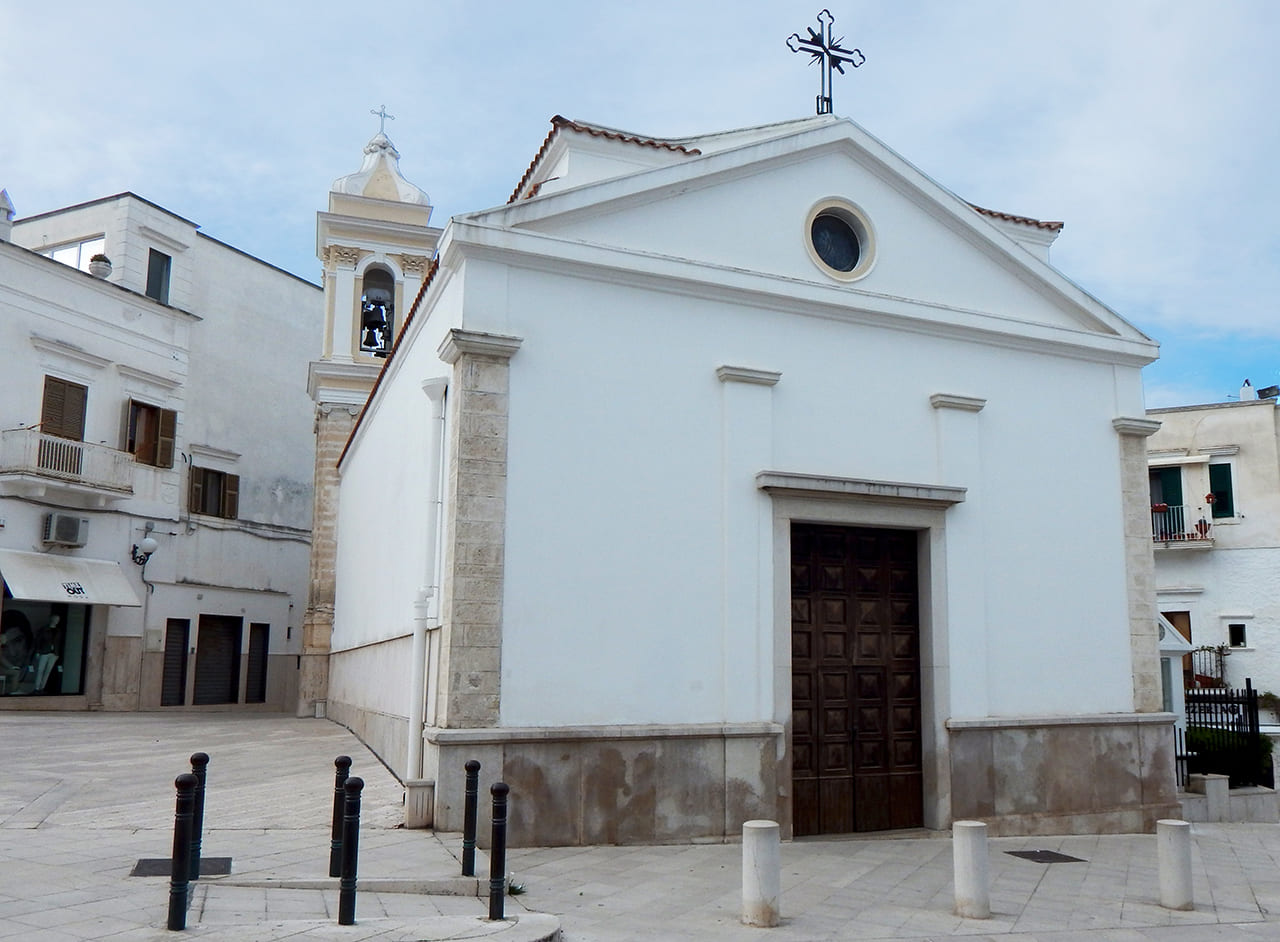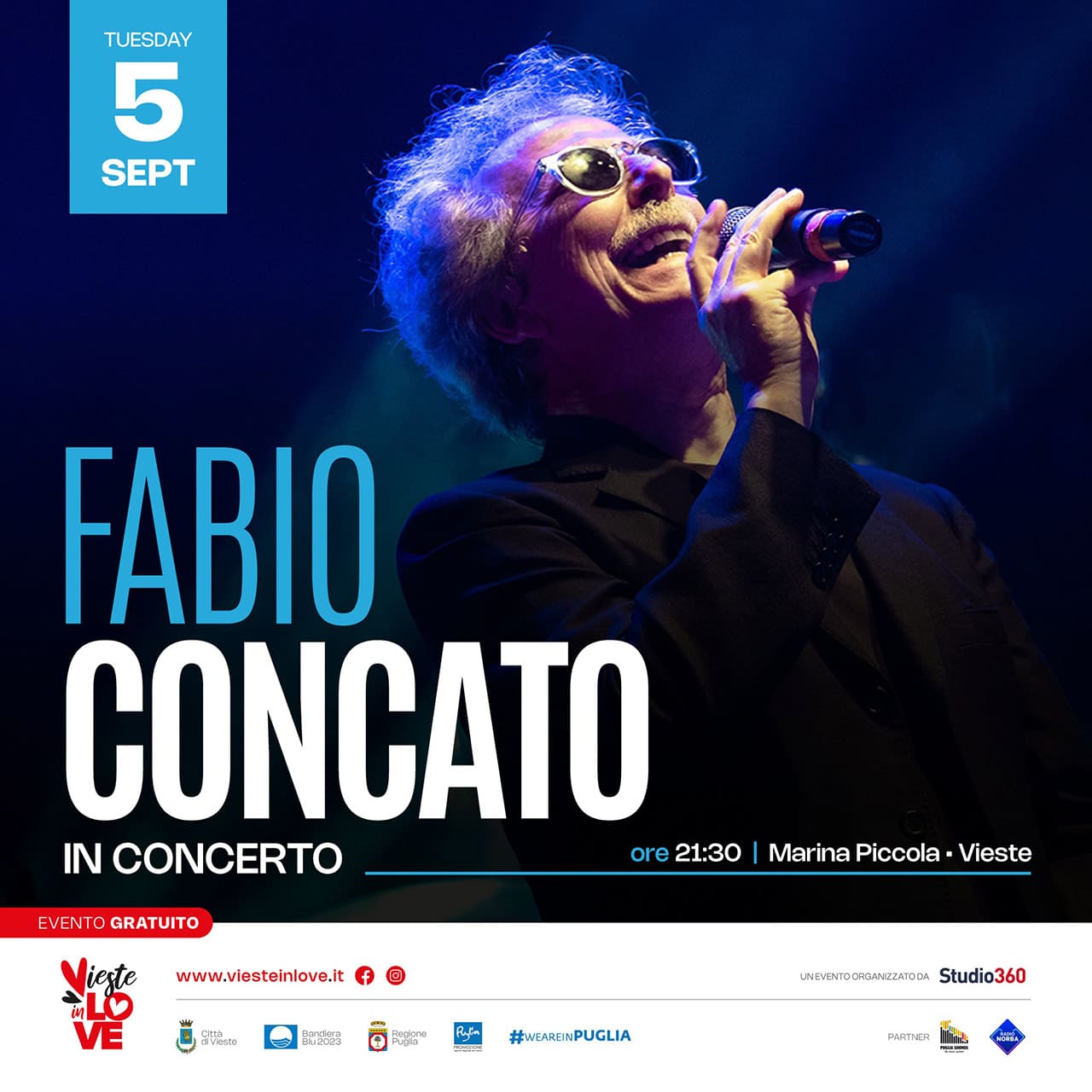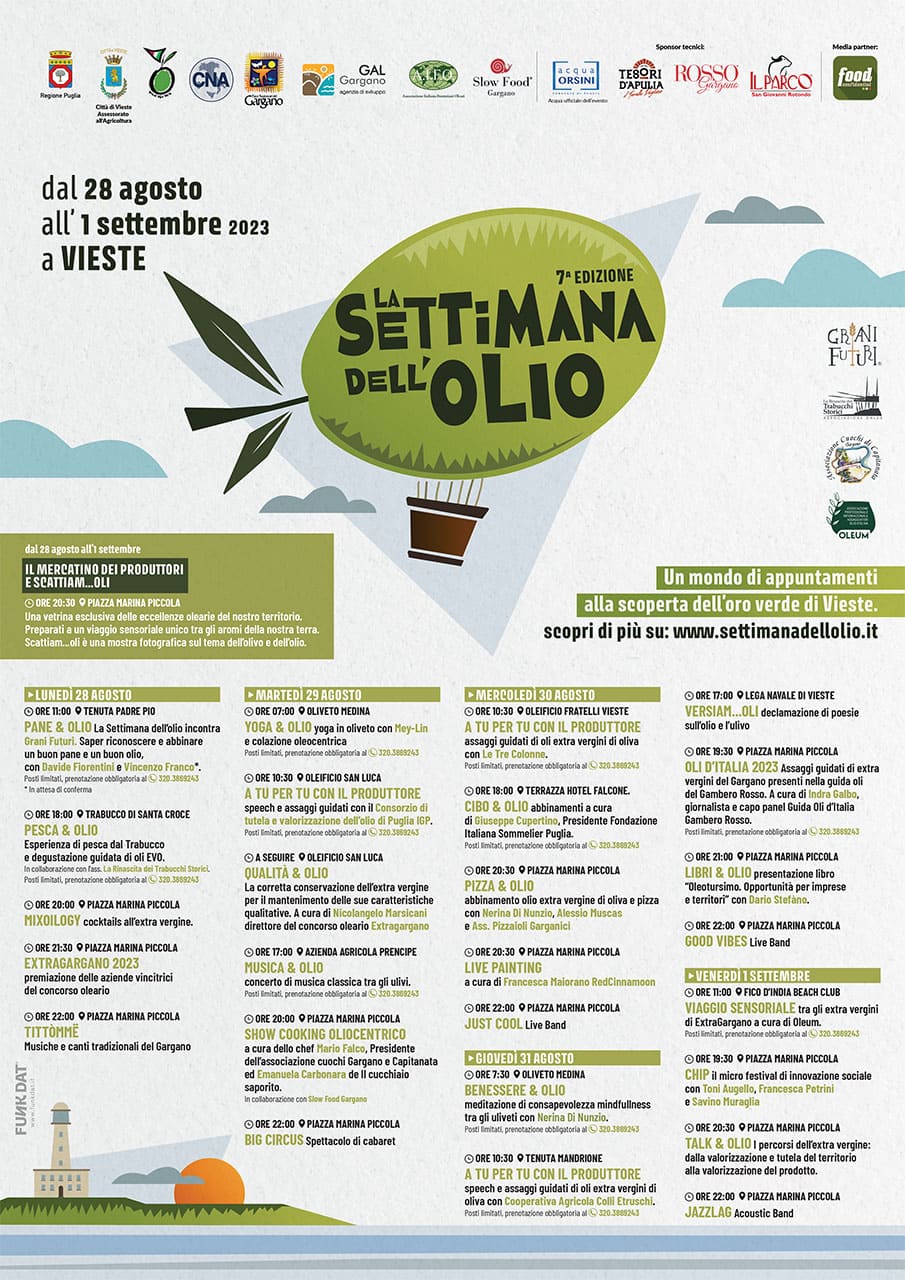La chiesa della Santa Croce fu fondata nel 1696 quando, un eccellente predicatore, Padre Antonio d’Agnone alla fine della processione del Venerdì Santo, il 20 Aprile, esortò il popolo ad edificare una chiesa dedicato al culto della Croce. Le somme necessarie vennero subito raccolte e, il 14 ottobre dello stesso anno Padre Antonio inaugurò una piccola chiesetta portando in processione un crocifisso ligneo che fu posto sull’altare. Nell’Ottocento intanto la chiesa venne inglobata nel nuovo piano urbanistico della città e, il 20 giugno 1811, Monsignor Arcaroli chiese ed ottenne da Gioacchino Murat di elevare la chiesa a titolo di parrocchia. La chiesa venne ingrandita nel 1827 a cui seguì la costruzione della sagrestia nel 1833 e l’erezione del campanile nel 1837 su progetto dell’architetto Francescantonio Nobile che ne abbellì l’interno con decorazioni policrome. La chiesa è a navata unica possiede con tre altari. Partendo da sinistra troviamo statua di San Rocco, l’altare della Madonna del Carmine con la statua omonima e il Sacro Cuore di Gesù mentre a destra troviamo, dall’ingresso, l’altare di Sant’Elia profeta e la statua di San Nicola di Mira. Il presbiterio ospita nelle nicchie laterali una statua di Santa Rita a destra, e del Bambino di Praga a sinistra, in alto una lunetta rappresentante Dio Padre del pittore viestano Vincenzo Villani risalente al 1934. Questo artista fu incaricato dall’Amministrazione comunale ad eseguire anche una Deposizione per l’altare centrale ed un quadro con San Nicola di Myra oggi non più presenti. All’esterno, sul lato destro della chiesa vi è la statua bronzea di San Pio da Pietrelcina realizzata dall’artista Silvano Vismara nel 1990. Nell’area a sinistra della chiesa invece si trova il monumento dedicato ai Caduti di tutte le guerre. Anche se molto semplice, questo monumento è il frutto di una lenta e travagliata trasformazione che ha trovato fine solo nel 2019.
The Church of Santa Croce (the Holy Cross) was founded in 1696 when, at the end of the Good Friday procession on April 20, an excellent preacher, Father Antonio d’Agnone, urged the people to build a church dedicated to the worship of the Cross. The necessary funds were collected immediately and, on October 14 of the same year, Father Antonio inaugurated a small church carrying a wooden crucifix in procession which was placed on the altar. In the nineteenth century the church was incorporated into the new urban plan of the city and, on June 20 1811, Monsignor Arcaroli asked and obtained from Gioacchino Murat to elevate the church as a parish. The church was enlarged in 1827 followed by the construction of the sacristy in 1833 and the erection of the bell tower in 1837 by architect Francescantonio Nobile who enriched the interior with polychrome decorations. The church has a single nave possesses with three altars. Starting from the left we find the statue of San Rocco, the altar of the Madonna del Carmine with the statue of the same name and the Sacred Heart of Jesus while on the right we find, from the entrance, the altar of Sant’Elia prophet and the statue of San Nicholas of Myra. The presbytery houses in the side niches a statue of Saint Rita on the right, and of the Child of Prague on the left, a lunette representing God the Father by Vincenzo Villani from 1934 on the top. This artistic panel was commissioned by the municipal administration with a Deposition and a painting with St. Nicholas of Myra no longer present today. Outside, on the right side of the church there is the bronze statue of St. Pio of Pietrelcina made by the artist Silvano Vismara in 1990. In the area to the left of the church there is a war Memorial. Although very simple, this monument is the result of a slow and troubled transformation that ended in 2019.
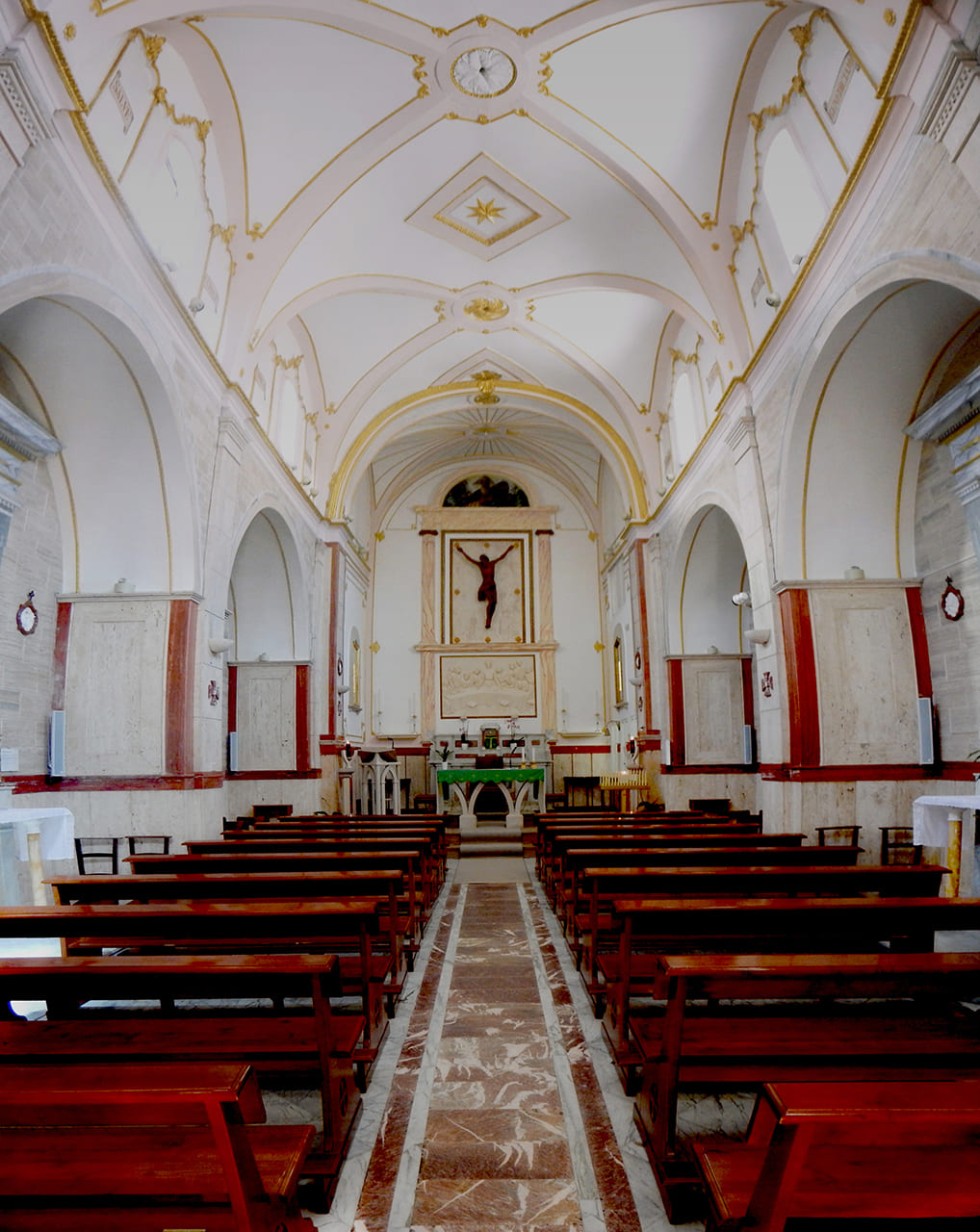
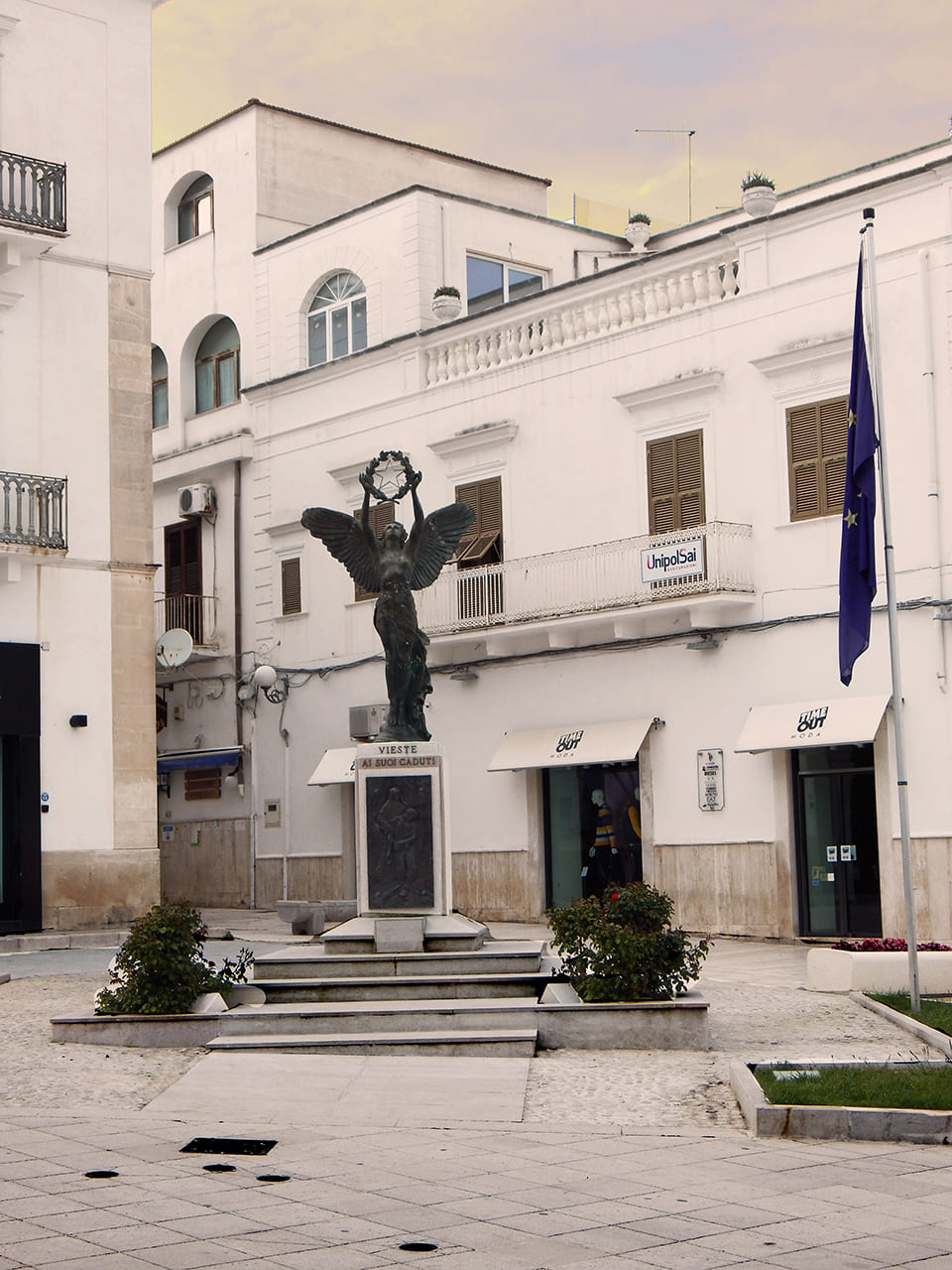
MULTIMEDIALE
Dopo la Prima Guerra Mondiale, nel 1923 a Vieste venne realizzato il Parco delle Rimembranze sotto le mura del castello affiggendo su un muro una lapide con tutti i nomi dei caduti e mettendo a dimora una pianta per ogni vittima viestana. In questo luogo alla presenza delle autorità civili e militari, i combattenti, i reduci, i partigiani e i mutilati, ogni 4 Novembre si celebrava il ricordo di questo momento storico così buio. Poiché l’accesso era scomodo e faticoso, soprattutto per gli anziani, era una strada in salita e sabbiosa, dopo la manifestazione del 4 Novembre del 1937, il comitato “pro erigente monumento ai caduti” per ovviare a questi disagi, chiese al Podestà Andrea Medina di provvedere allo spostamento dello stesso. Il Podestà decise allora di sistemarlo nei giardini pubblici di Corso Lorenzo Fazzini, fece rimuovere il parco e la lapide dei caduti, la quale fu temporaneamente affissa alla facciata del municipio. A causa della scarsa disponibilità finanziaria causata dall’inizio del secondo conflitto mondiale il monumento ai caduti fu sempre rimandato. Del progetto iniziale voluto dal comitato si realizzò solo una statua bronzea collocata sulla piazzetta laterale la chiesa di Santa Croce. Solo nel 2019 l’amministrazione ha deciso di rimodernare il monumento, rinnovare l’area verde e sistemare due cubi di marmo con l’elenco dei nomi dei caduti di tutte le guerre.
In 1923 the Park of Remembrance was built under the walls of the castle, placing on a wall a plaque with all the names of the dead and placing a plant for each victim in Vieste. In this place, in the presence of civil and military authorities, veterans, partisans and mutilated, every November 4th the memory of this dark historical moment was celebrated. after the celebrations of November 4, 1937, the committee “pro erecting monument to the war victims” asked to the Mayor Andrea Medina to move this park in a place more comfortable. Then he ecided to place it in the public gardens of Corso Lorenzo Fazzini, removed the park and the plaque which was temporarily affixed to the facade of the town hall. Due to the lack of funds caused by the beginning of the Second World War, the war memorial was always postponed. Of the initial project wanted by the committee, only a bronze statue was made and placed beside the church of Santa Croce. Only in 2019 Municipal Administration decides to renovate the monument and add two marble cubes with the names of the dead of all wars.
Nach dem Ersten Weltkrieg realisierten sie 1923 in Vieste den „Gedenkpark“ unter den Mauern des Schlosses mit einer Gedenktafel mit allen Namen der Gefallenen und einer Pflanze für jeden von ihnen. Jeden 4. November eines jeden Jahres feierten alle Zivilbehörden, Militärs, Partisanen, Verstümmelten und Soldaten die Erinnerung an diese dunkle Zeit. Die Zugänglichkeit war besonders für die alten Leute ungünstig, sodass das Komitee des Denkmals der Gefallenen nach der Feier des 4. November 1937 den Bürgermeister Andrea Medina aufforderte, es zu bewegen. Er beschloss, es in den öffentlichen Garten am Corso Lorenzo Fazzini zu verlegen, sodass die Gedenktafel vorübergehend an der Wand des Rathauses angebracht wurde. Aufgrund des Zweiten Weltkriegs und des Geldmangels wurde das Denkmal immer verschoben, und sie realisierten gerade die Bronzestatue des ersten Projekts neben der Kirche Santa Croce. Nur im Jahr 2019 die Stadtverwaltung renoviert das Denkmal mit einem neuen Grünfläche mit zwei Marmorwürfel mit allen Namen der aller Kriege gefallen.

